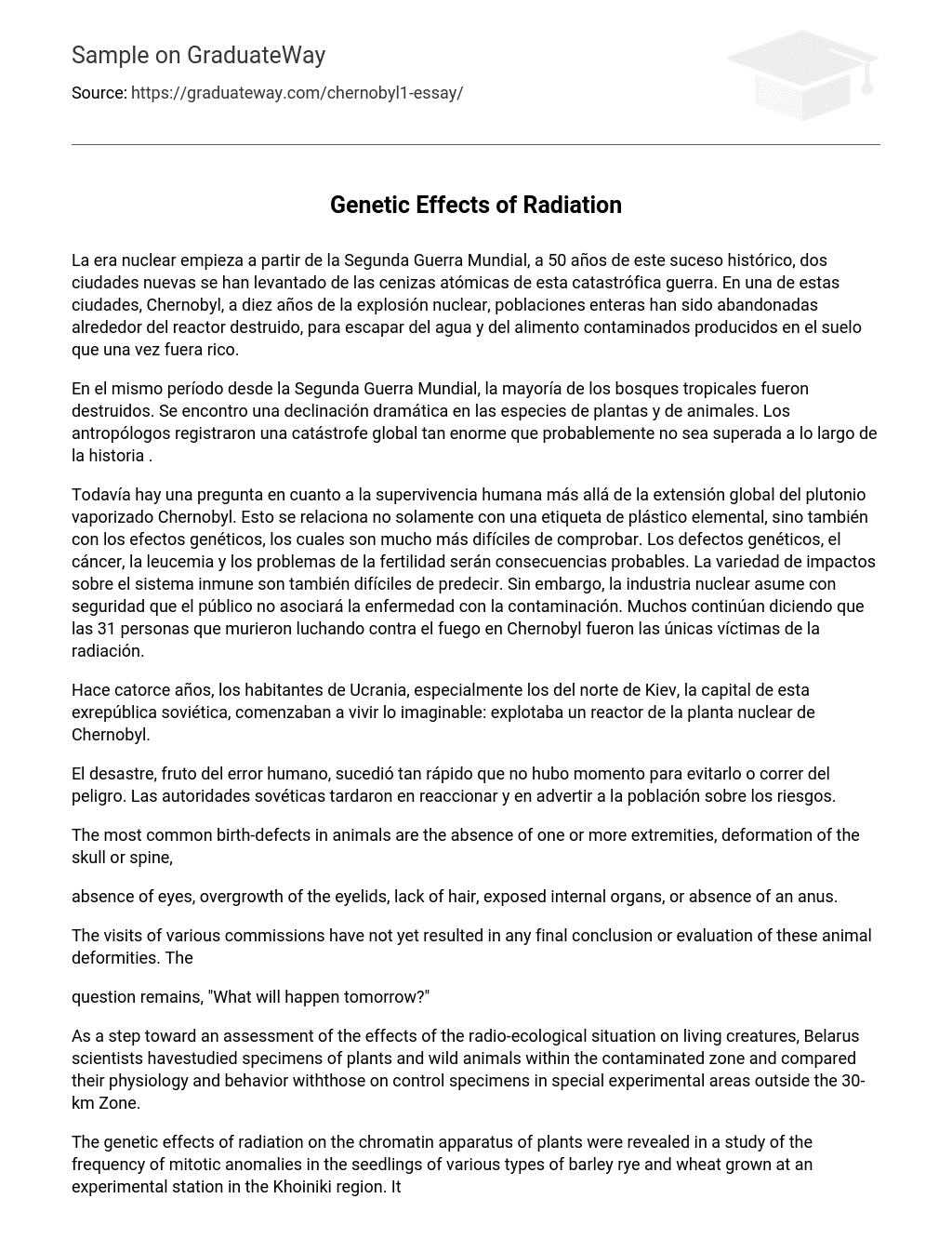The nuclear age begins with the Second World War, 50 years after this historic event, two new cities have risen from the atomic ashes of this catastrophic war. In one of these cities, Chernobyl, ten years after the nuclear explosion, entire populations have been abandoned around the destroyed reactor, to escape the contaminated water and food produced in the once-rich soil.
In the same period since World War II, most tropical forests were destroyed. A dramatic decline in plant and animal species was found. Anthropologists recorded a global catastrophe so enormous that it will probably not be surpassed throughout history.
There is still a question as to human survival beyond the global spread of Chernobyl vaporized plutonium. This relates not only to an elemental plastic tag, but also to genetic effects, which are much more difficult to test. Genetic defects, cancer, leukemia, and fertility problems will be likely consequences.
The variety of impacts on the immune system are also difficult to predict. However, the nuclear industry safely assumes that the public will not associate illness with contamination. Many continue to say that the 31 people who died fighting the fire at Chernobyl were the only victims of radiation. Fourteen years ago, the inhabitants of Ukraine, especially those north of kyiv, the capital of this former Soviet republic, began to experience the unimaginable: a reactor at the Chernobyl nuclear plant exploded.
The disaster, the result of human error, happened so quickly that there was no time to avoid it or run from danger. The Soviet authorities were slow to react and warn the population about the risks. The most common birth-defects in animals are the absence of one or more extremities, deformation of the skull or spine, absence of eyes, overgrowth of the eyelids, lack of hair, exposed internal organs, or absence of an anus.
The visits of various commissions have not yet resulted in any final conclusion or evaluation of these animal deformities. the question remains, “What will happen tomorrow?” As a step toward an assessment of the effects of the radio-ecological situation on living creatures, Belarusian scientists have studied specimens of plants and wild animals within the contaminated zone and compared their physiology and behavior with those on control specimens in special experimental areas outside the 30- km Zone.
The genetic effects of radiation on the chromatin apparatus of plants were revealed in a study of the frequency of mitotic anomalies in the seedlings of various types of barley rye and wheat grown at an experimental station in the Khoiniki region. It was established that different strains reacted differently to radioactive contamination.
The cesium-134/7 content of rye and wheat grains grown in Khoiniki was an order of magnitude higher than that of grain grown in Minsk province, while there was little difference in the case of barley. An analysis of chromosomal aberrations year by year has shown that the frequency of mitotic anomalies in plants grown in the contaminated zone in 1987 was little different from the frequency observed in ecologically clean areas. In 1988, however, in all types of plants under observation there was a noticeable rise in the frequency
of chromosomal aberrations. Signs of degeneration and destruction have also been noted in the pancreas, leading to increased permeability of the blood vessels, leucocyte infiltration, changes in the vessel walls, and the abnormal growth of connective tissue. At the same time, the immune system has been significantly damaged, as is shown by a change in the number of differentiated B-lymphocytes in the bone marrow, the reduction of polyferation, the differentiation and migration of T-lymphocytes, a disequilibrium of the proportions among thymocytes, etc.
Damage to the structure and function of the membranes of the lymphocytes is evident, as is damage to the peripheral hormonal action machanisms and to the system of peroxide oxidation of lipids, along with an increased level of wasteproducts in the blood and an accompanying drop in the activity of the antioxidant systems. There are marked changes in the function of the cell genome, etc.
We challenge the “nuclear professionals” to stand on equal ground with the victims. The victims are very much alone, and much of the public is looking the other way. Getting Americans to look at Chernobyl requires awareness of the emotional impact including denial. The need to be impartial often renders people aloof. A climate of insensitivity is fed by competition while the cold cutting edge works best with a forced sense of well-being, while the balance of truth is undermined by accusations of false fears.





